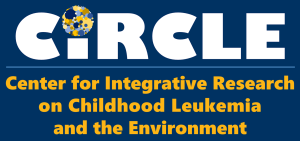Todd Whitehead, Ph.D.
Contaminated Dust in Homes and Children’s Health
Dr. Whitehead discusses how harmful chemicals including PCBs and flame retardants are found in household dust. His studies show that such chemicals remain in dust for years. Children are at greatest risk of exposure because they play on floors and tend to ingest dust. He shows that these chemicals were found in dust samples collected for the purposes of investigating the causes of childhood leukemia.
Measuring Contaminants in Dust
Dr. Whitehead explains how to measure chemicals in settled dust collected from homes. Some chemicals found in household dust are harmful to children. He works with samples collected by regular vacuum cleaners.
A Legacy of Contaminated Dust
Dr. Whitehead explains the legacy of banned industrial chemicals; how the uses of these chemicals were discontinued a year ago, yet are still found in most homes.
Approaches to Considering Cumulative Exposures for Children
Dr. Whitehead brings together information from several types of exposure assessments conducted for studies of causes of leukemia in children by CIRCLE. He shows that some contaminants occur together in homes and shows new ways to portray and study such cumulative exposures. Reducing cumulative burdens of such contaminants is essential to protect children.
Using Household Dust to Measure Children’s Chemical Exposures in Homes
Dr. Whitehead explains how CIRCLE investigators use household dust samples to measure children’s exposure to chemicals in the home.
Using House Dust to Measure Chemicals Affecting Children
Dr. Whitehead shows that dust from houses can be used to measure chemicals that children are exposed to at home, particularly PAHs, PCBs, PBDEs, and tobacco smoke constituents. He shows that measurements taken several years after a child is born are useful to estimate earlier exposure.
Stephen Rappaport, Ph.D.
The Exposome Paradigm: Using Untargeted Approaches to Discover Causes of Disease
Dr. Rappaport advocates for studies of the whole “exposome”.
Joseph Wiemels, Ph.D.
Environmental Exposures and Methylation Changes in Blood Spots
Dr. Wiemels explains how environmental factors can cause epigenetic changes that control development and many other aspects of human biology. In this presentation, Dr. Wiemels highlights methods to measure early epigenetic changes that may contribute to disease. He discusses one form of epigenetic changes, known as methylation, measured in small samples of blood collected on cards.
Environmental Exposures, Childhood Leukemia and the Role of DNA Methylation
Dr. Wiemels explains the importance of epigenetics. Epigenetic changes do not damage DNA (like mutations), but alter the way that DNA is expressed. This can affect development in early life. Aberrant epigenetic changes may cause some types of leukemia. Leukemia includes a number of different diseases with different patterns of epigenetic markers including methylation. Environmental agents may change methylation patterns, and the changes may be heritable.

